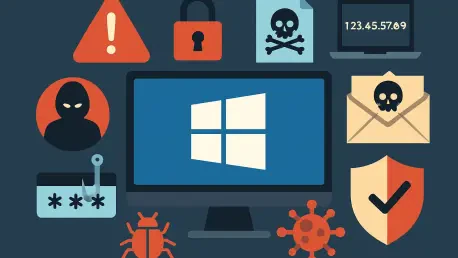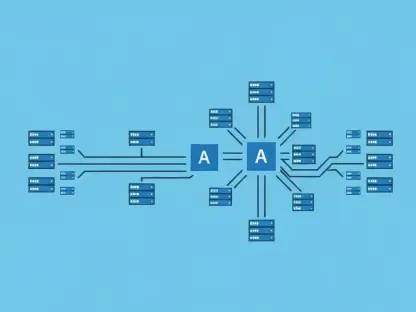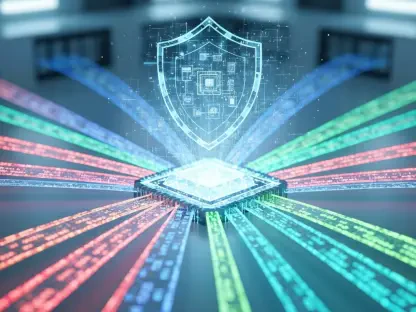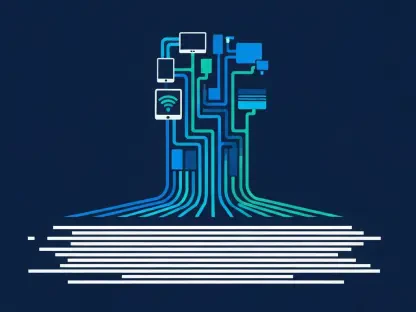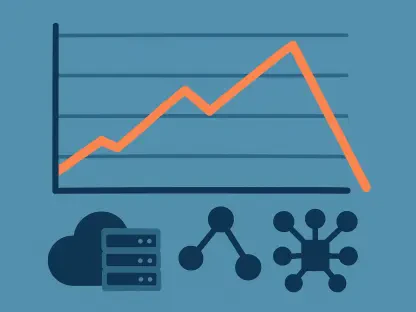In an era where digital threats are becoming increasingly sophisticated, countless Windows users remain tethered to outdated assumptions about their system’s security, potentially exposing themselves to significant risks. As one of the most widely used operating systems globally, Microsoft Windows is a prime target for cybercriminals who exploit both technical vulnerabilities and human error. Many individuals still believe myths about antivirus software, built-in security tools, and personal vulnerability, creating dangerous gaps in their defenses. These misconceptions, often rooted in past experiences or misinformation, can lead to devastating consequences like data theft or system compromise. This article aims to dissect these persistent myths, separating fact from fiction to provide clarity on what truly keeps a Windows system secure. With cyber threats evolving at a rapid pace, understanding the reality behind these beliefs is crucial for anyone relying on Windows in their daily personal or professional life. By addressing these misunderstandings head-on, the goal is to equip users with actionable insights to fortify their digital safety.
Debunking the Need for Paid Antivirus Software
A longstanding belief among Windows users is that effective antivirus protection requires a paid subscription, a notion born from an era when the operating system lacked strong built-in defenses. In those earlier days, third-party software was often seen as the only reliable option to guard against malware and viruses, leading to a market dominated by costly solutions. However, the landscape has shifted dramatically. Microsoft Defender, bundled free with Windows, now provides robust protection against a wide array of common threats, often rivaling or surpassing paid alternatives for typical users. Additionally, numerous third-party providers offer free versions of their tools that cover essential security needs without costing a dime. This challenges the outdated perception that safety must come at a premium, suggesting that for many, the expense of paid antivirus software is an unnecessary burden.
While paid antivirus suites frequently advertise advanced features like Wi-Fi monitoring or enhanced phishing protection, their value is often questionable for the average user. Many of these extras duplicate functionalities already embedded in modern web browsers or achievable through basic caution and manual settings adjustments, such as securing a home router. For instance, avoiding suspicious links or public networks can mitigate risks without additional software. Instead of investing in comprehensive security packages, funds might be better allocated to specific tools like VPNs for those with particular privacy concerns. The reality is that free options, including Microsoft Defender, form a solid foundation for most, debunking the myth that financial investment equates to better security. Users are encouraged to evaluate their actual needs before spending, ensuring resources are directed where they matter most.
Unmasking the Limits of Built-In Windows Security
Some Windows users swing to the opposite extreme, placing blind trust in Microsoft Defender as a complete shield against all cyber dangers, assuming it covers every possible threat. While this built-in tool excels at detecting and neutralizing many forms of malware, it falls short in addressing certain critical risks. It is designed primarily for technical threats, meaning it cannot intervene in scenarios where human error plays a central role. For example, social engineering tactics, such as deceptive emails that lure users into revealing sensitive information, operate outside the scope of what Defender can prevent. This over-reliance on a single solution creates a false sense of invincibility that cybercriminals are quick to exploit.
Beyond social engineering, Microsoft Defender also lacks the ability to notify users of external data breaches where personal information might already be compromised on unrelated platforms. It operates within the confines of the system, leaving gaps in broader digital safety. The lesson here is that no single tool can offer absolute protection, regardless of its capabilities. Combining Defender with prudent habits, such as scrutinizing unsolicited communications and routinely monitoring accounts for unusual activity, forms a more comprehensive defense strategy. This myth underscores the importance of user responsibility, highlighting that technology must be paired with awareness to navigate the complex threat landscape effectively. A balanced approach, rather than blind faith in software, is essential for true security.
The Peril of Neglecting Windows Updates
The frustration of Windows updates interrupting workflows with mandatory restarts or lengthy installations often tempts users to postpone them indefinitely, under the mistaken belief that they are trivial. This perception downplays the critical role updates play in maintaining system integrity. Far from being mere feature enhancements, updates frequently include patches for newly discovered vulnerabilities that, if left unaddressed, provide easy entry points for attackers. In an environment where cyber threats are constantly advancing, ignoring these updates is akin to leaving a known security flaw unfixed, inviting potential exploitation by malicious entities.
While it’s unnecessary to install every update the instant it becomes available, prolonged delays can compound risks significantly. A system left unpatched for weeks or months becomes a prime target for malware designed to exploit outdated software. The inconvenience of updates pales in comparison to the potential fallout of a security breach, which could result in data loss or system downtime. Users must recognize that staying current with updates is a fundamental, non-negotiable aspect of digital safety. Striking a balance between convenience and security means scheduling updates during less disruptive times, ensuring protection without sacrificing productivity. This myth reveals a broader tendency to prioritize short-term ease over long-term safety, a mindset that must shift to keep pace with evolving risks.
Misconceptions About File Safety
A common misunderstanding among Windows users is the assumption that only executable (EXE) files pose a security threat, largely due to their association with running programs or installing software. This narrow view overlooks the reality that a wide range of file types, including PDFs, ZIP archives, and even images, can harbor malicious content. The danger is amplified by Windows’ default setting to hide file extensions, which can disguise a harmful file as something benign. For instance, a file labeled as a simple document might actually contain executable code that triggers malware upon opening, catching unsuspecting users off guard.
Attackers frequently leverage this lack of awareness, embedding threats in seemingly harmless files to bypass suspicion. The key to countering this risk lies in adopting a cautious approach to all digital content, regardless of its apparent type. Users should refrain from opening attachments or downloads from unknown sources and take extra steps to verify file extensions when in doubt. This myth highlights a critical gap in understanding the diverse methods cybercriminals employ to distribute threats. Education on the broader spectrum of potential dangers is vital, as it empowers users to act with skepticism rather than trust when handling files. By dispelling the notion that only certain formats are risky, a more vigilant mindset can prevent significant security incidents.
The Looming Threat for Windows 10 Holdouts
As Windows 10 reaches its end of support on October 14, 2025, a significant number of users contemplate continuing with the familiar operating system, believing it remains secure despite the cutoff. This assumption is deeply flawed and poses escalating risks over time. Once Microsoft discontinues updates, newly identified vulnerabilities will no longer be patched, leaving systems increasingly exposed to attacks. The absence of ongoing security fixes transforms Windows 10 into an attractive target for hackers seeking to capitalize on a large, outdated user base.
Compounding the issue, many applications are likely to cease support for Windows 10, focusing instead on newer platforms and further isolating users from essential compatibility and safety updates. Options such as upgrading to Windows 11, provided hardware requirements are met, or exploring alternatives like Linux, present viable paths forward. Clinging to an unsupported system is not merely a gamble but a direct invitation to potential disaster, as risks accumulate with each passing day beyond the support deadline. Users must act proactively to transition to a supported environment, recognizing that familiarity with an old system cannot justify the inherent dangers. This myth emphasizes the necessity of adapting to current technological standards to avoid becoming an easy mark for cyber threats.
Shattering the Illusion of Personal Invulnerability
Perhaps the most pervasive and hazardous myth is the belief that average individuals are not worth targeting by cybercriminals, often due to a perceived lack of valuable data or assets. This dangerous complacency ignores the reality of how attackers operate, casting a broad net to exploit any accessible system for profit or leverage. Personal accounts, such as email or social media, can be hijacked to facilitate fraud, impersonation, or access to linked services, demonstrating that even seemingly minor targets hold significant value in the wrong hands.
Beyond account takeovers, a compromised device can be enlisted into a botnet, used for malicious activities without the owner’s knowledge, or exploited to steal stored payment information from online shopping profiles. Personal data, no matter how trivial it may seem, is a commodity on illicit markets, often used to craft tailored attacks. This myth reveals a fundamental misunderstanding of cybercrime dynamics, where quantity often trumps quality in targeting strategies. Protecting personal systems with strong passwords, multi-factor authentication, and constant alertness to suspicious activity is imperative. Every user must acknowledge their potential as a target and take steps to secure their digital presence, as underestimating risk only amplifies vulnerability in an interconnected world.
Navigating the Future of Windows Security
Reflecting on the myths surrounding Windows security, it becomes evident that many users have operated under false assumptions for far too long, exposing themselves to preventable risks. Misconceptions about the necessity of paid antivirus, the capabilities of built-in tools, and personal vulnerability have created a landscape where outdated beliefs often trump modern realities. The critical role of updates, the hidden dangers in various file types, and the looming threats for outdated systems like Windows 10 have been underestimated by countless individuals, leaving gaps in their digital armor.
Moving forward, the focus should shift to actionable strategies that blend technology with informed behavior. Embracing free tools like Microsoft Defender as a baseline, while supplementing them with cautious habits, offers a practical starting point. Prioritizing timely updates and transitioning away from unsupported systems must become standard practice to counter evolving threats. Additionally, fostering a mindset of universal vulnerability encourages proactive measures, such as securing accounts and scrutinizing digital interactions. By challenging these myths and adopting a forward-thinking approach, users can build a resilient defense, ensuring their Windows systems remain safeguarded against the unpredictable nature of cyber risks.
